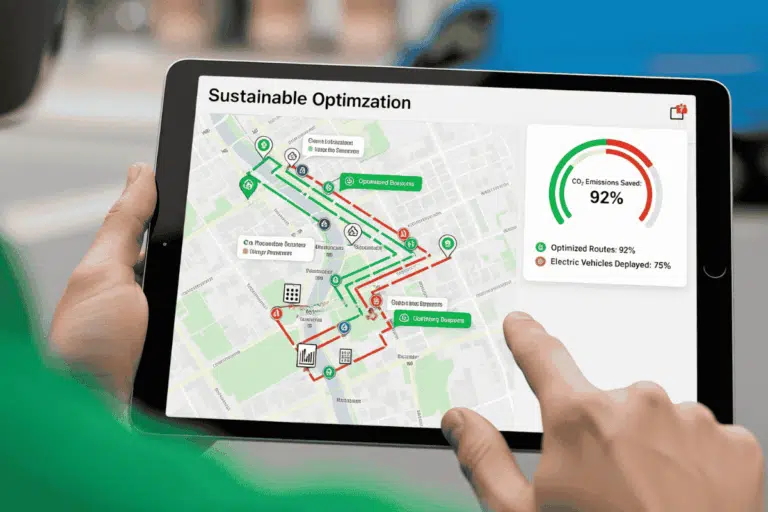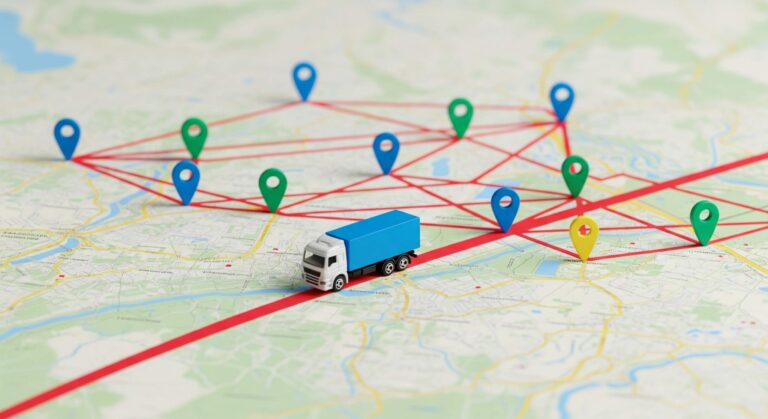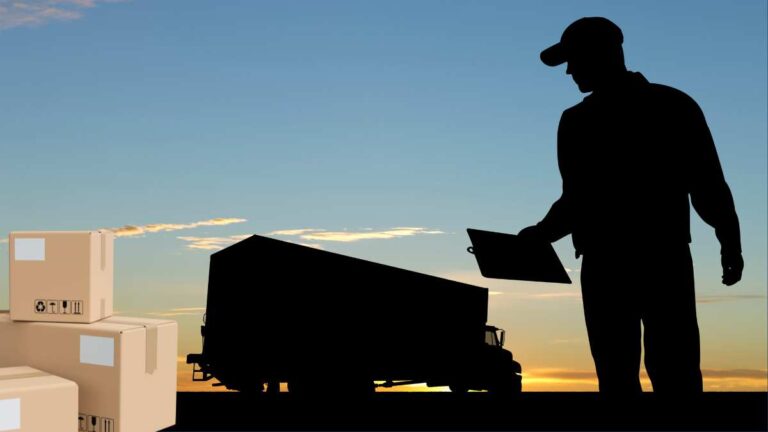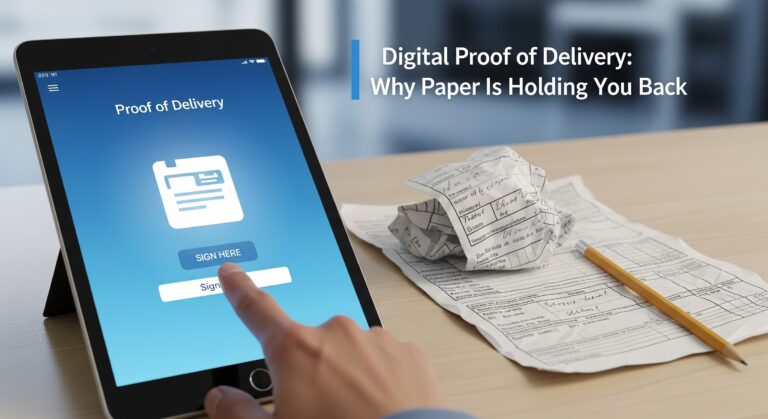When you think about logistics and parcel delivery, you might picture a delivery truck dropping off packages at your doorstep. But behind that simple act lies a complex and well-coordinated system known as logistics.
Let’s dive into why logistics is so crucial in parcel delivery and how advancements in technology are shaping the future of this industry. We’ll start off by highlighting the concept of last mile delivery.
What is last mile delivery in logistics?
Last mile delivery refers to the final step in the last mile delivery process where a package is transported from a distribution center or warehouse to the customer’s doorstep.
This final step is often considered the most challenging part of the delivery process due to the high costs and need for efficiency, known as the challenges of the last mile.
Efficient last mile delivery is crucial for maintaining high customer satisfaction, as timely and accurate deliveries directly impact customer loyalty and overall experience.
Logistics refers to the comprehensive process involved in the movement of goods from one location to another, encompassing both transportation and warehousing.
It isn’t just about getting a package from point A to point B. It encompasses various methods to ensure packages of all types and sizes reach their destinations safely.
The backbone of parcel delivery: Logistics
At its core, logistics is the process of planning, implementing, and controlling the efficient flow of goods from the point of origin to the point of consumption. This involves logistics management, which plays a crucial role in planning, implementing, and controlling the efficient flow of goods.
Effective logistics management ensures timely and accurate deliveries, providing a competitive edge and positively impacting a business’s financial performance.
Why does this matter? Because a well-oiled logistics system ensures that parcels are delivered quickly, accurately, and at the lowest cost.
Evolution of parcel delivery
Parcel delivery has come a long way. Technology management plays a crucial role in integrating technology with management practices to enhance logistics efficiency.
Today, we have a variety of innovative solutions to ensure parcels reach their destinations efficiently. Two examples of innovation are parcel lockers and drones.
Parcel Lockers
Parcel lockers are secure storage units where customers can pick up their packages at their convenience.
These lockers are usually located in easily accessible areas like supermarkets or apartment complexes.
Lockers offer a great solution for reducing failed delivery attempts, which can be a logistical nightmare.
Why choose a parcel locker?
- Convenience: Provides the public a secure and accessible location for parcel deliveries and pickups, available 24/7.
- Security: Lockers reduce the risk of theft and damage since packages are stored in a secure, locked compartment.
- Efficiency: They streamline the delivery process, and can assist in reducing the number of missed deliveries and the need for multiple delivery attempts.
- Flexibility: Customers can pick up their packages at a time that suits them, without needing to be home to receive deliveries.
- Cost savings: They can lower delivery costs by minimizing the distance and time required for delivery drivers.
Companies have come up with convenient ways to use parcel lockers to make receiving and sending parcels easier.
Quadient, a global automation platform, has a contract with Punch Pubs, a leading pub company in the UK. This sees the deployment of Quadient’s Parcel Pending locker network across 1,261 Punch Pubs locations.
Parcel locker in action
You head to the parcel locker to pick up your package. You make use of the app to generate a one-time access code, which you enter into the locker’s interface. The corresponding locker door pops open, and you can retrieve the package.
Then you receive a confirmation message on your phone, acknowledging that you have picked up the package.
Drones
Drones represent the cutting edge of parcel delivery. Understanding global logistics and the various components of international logistics practices is crucial for preparing for high-level careers in this growing industry.
Companies like Amazon and UPS are experimenting with drone deliveries to reach remote areas quickly and efficiently.
This nifty modern technology can bypass traffic and other obstacles, making them ideal for urgent or last-mile deliveries.
Choosing drones for delivery
There are several reasons drones are being used to deliver packages/cargo. The standout has to be speed of delivery.
Drones fly above ground and are not restricted by traffic. Another factor is deliveries will not be hampered by the issue of labor shortages, and they may be in flight during a lunch hour, when a person has to take breaks – the drone does not.
Drones are cost-effective. Imagine a courier fleet’s fuel bill at the end of each month.
The drone does not travel on roads, so there is less wear and tear on the drone as opposed to a vehicle which may be stranded at a service center for a particular problem. Vehicle repairs can be costly. In addition, drones do not emit toxic fumes.
Technological advancements in global logistics
The role of technology in logistics cannot be overstated. Logistics management software aids businesses in optimizing routing and shipping decisions, reducing costs, and automating various processes such as inventory control and transaction management.
Several technological advancements have revolutionized the way we handle parcel deliveries.
Route optimization logistics management software
Route optimization software helps delivery companies plan the most efficient routes for their drivers. This software takes into account factors like traffic, distance, and delivery windows to minimize fuel consumption and delivery time.
Both the companies and customers win here, ensuring timely deliveries and reducing operational costs.
Real-time tracking
Gone are the days when you had to wonder where your package was. Real-time tracking technology allows customers to monitor their parcels’ journey from the warehouse to their doorstep.
This transparency builds trust and provides peace of mind, as customers can anticipate when their package will arrive.
Locate2u has route optimization and real-time tracking software to help your logistics or delivery company deliver to customers with ease.
Here’s a scenario: A customer places an order, a live tracking link is automatically generated for each individual.
A customer has an urgent grocery order. They can view the live tracking of the delivery and follow the grocery’s path, and when it will arrive at their doorstep. In the meantime, your customer feels at ease about the entire experience because they can stay in control.
They’ll have peace of mind and likely keep your store’s number on speed dial.
Cold chain supply chain management
Cold chain logistics is critical for transporting perishable goods like food and pharmaceuticals. It involves maintaining a specific temperature range throughout the delivery process to ensure the items remain fresh and safe to use.
Effective inventory control plays a vital role in reducing costs, improving production rates, and enhancing customer satisfaction through better management of temperature-sensitive products.
This is particularly important for vaccines and other medical supplies that are sensitive to temperature changes.
Cold chain logistics ensures that these products remain effective by maintaining the required temperature throughout the supply chain, from manufacturing to delivery.
UPS Healthcare (a division of UPS) has made good strides in the pharmaceutical logistics space.
The company offers a number of solutions, which include cold chain solutions. Here the business offers temperature-controlled logistics solutions to ensure the safe and efficient transportation of temperature-sensitive products, such as vaccines, biologics, and other pharmaceuticals. This includes refrigerated, frozen, and cryogenic shipping options.
It also provides specialized warehousing services tailored to the needs of the healthcare sector.
Air freight for parcel delivery
Air freight is essential for long-distance and international deliveries. Logistics companies play a crucial role in facilitating these operations, with professionals working in various roles within the logistics industry, including shipping lines and freight forwarders.
It’s the fastest way to transport parcels across countries and continents, making it ideal for urgent shipments.
However, it’s also more expensive, so it’s usually reserved for high-value or time-sensitive items.
Benefits of shipping air freight
- Speed: Companies may need stock urgently and choose air freight as it’s a much faster option than ocean freight. The Red Sea crisis may force manufacturers and store owners to look to air freight to prevent a serious shortage in their production line or store shelves.
- Reliability: Airlines run strict schedules. These schedules make it a reliable option for air freight cargo. Fresh produce is often flown via airfreight so items arrive fresh at a destination.
- Efficiency: Shipping by air freight is a great time saver. A manufacturer may need an urgent part to complete a project. Placing the item as air cargo will allow the manufacturer to save time instead of waiting a few weeks for ocean freight to arrive in port.
Key ingredients for successful delivery
A successful delivery isn’t just about getting the parcel to the customer; it’s about doing it in a way that meets their expectations. Logistics managers play a crucial role in overseeing the complexities involved in the logistics process, including resource management, shipping, and inventory control.
In his book titled Delivery, Australian delivery expert and founder of Zoom2u Technologies (ASX:Z2U) Steve Orenstein speaks of five key ingredients in this process.
Speed
In today’s fast-paced world, speed is paramount. Customers expect quick deliveries, and companies that can provide this stand out from the competition.
“The best deliveries are speedy deliveries. Same-day delivery (or next day, depending on the time the product is ordered) is what wows customers,” says Orenstein.
Choice
Offering customers choices in delivery options (e.g., standard, expedited, same-day) allows them to select what best fits their needs.
“The customer needs the flexibility to choose a time window, and be confident that it will be delivered on the day and in the window they choose,” says Orenstein.
Communication
Keeping customers informed about their delivery status is vital. Real-time tracking and regular updates ensure customers know when to expect their parcels.
“The delivery drivers should be able to communicate with your customers if needed, and vice versa,” says Orenstein.
Problem solving
Issues can arise during delivery, such as wrong addresses or damaged goods. Having a robust problem-solving mechanism ensures these issues are resolved quickly and efficiently.
“If you can make sure that when there’s a problem the customer has the option to give feedback directly to you. You can fix it quickly and they are more likely to feel looked after than frustrated,” he says.
Efficiency in inventory management
Efficiency in logistics means using resources wisely to minimize costs and delivery times. Business logistics involves the comprehensive processes of transporting and storing materials and goods within a business context.
It is crucial for the strategic management of processes such as inbound and outbound logistics, inventory control, and the integration of logistics management systems. This includes everything from route optimization to packing methods that reduce waste, or the impact on the environment.
“Improve your delivery, and you can talk about it in your marketing, sharing with your customers the measures you’ve taken to reduce emissions and have a smaller footprint,” says Orenstein.
The sustainable option in logistics
In today’s modern world, it’s not difficult to leave out the important topic of sustainability in logistics. Effective warehouse management plays a crucial role in minimizing costs, organizing inventory efficiently, and coordinating the flow of goods to enhance overall logistics performance.
In its third annual sustainability survey, supply chain management company Blue Yonder shows that 78% of respondents say sustainability is a determining factor when choosing to purchase a product or shop at a particular retailer. Some customers are willing to prioritize sustainability.
In the UK, postal service operators are also shifting to sustainable logistics. The UK’s first fully electric mobile post office has been successfully trialed.
In Australia, Grace Removals, one of the country’s largest furniture removal companies introduced the first fully electric removal truck.
Benefit of electric vehicles
The logistics world has become environmentally conscious. Logistics specialists Maersk have successfully completed pilot tests that will provide electric truck deliveries to customers in Brazil. Here’s why electric trucks. Here’s some benefits of electric trucks.
Environmental impact
Electric trucks produce zero tailpipe emissions, significantly reducing air pollution and contributing to cleaner urban environments.
Cost efficiency
Although the initial investment in electric trucks can be higher, the long-term savings are substantial. Lower fuel costs and reduced maintenance requirements lead to a decrease in overall operational expenses.
Electric trucks have fewer moving parts compared to traditional internal combustion engines, resulting in less wear and tear.
Operational efficiency
Electric trucks offer improved energy efficiency and performance, especially in stop-and-go urban delivery routes.
They provide smooth and quiet operation, enhancing driver comfort and reducing noise pollution in residential areas.
About the author
Sharl is a qualified journalist. He has over 10 years’ experience in the media industry, including positions as an editor of a magazine and Business Editor of a daily newspaper. Sharl also has experience in logistics specifically operations, where he worked with global food aid organisations distributing food into Africa. Sharl enjoys writing business stories and human interest pieces.










